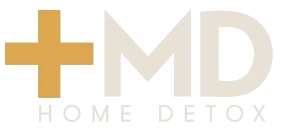Addiction is a sneaky, insidious disease. What starts off as a fairly innocent, recreational habit can spiral into a full-blown addiction just by feeding it a little more here and a bit more there. Drugs, regardless of how they are ingested, pass through the tissues to enter the bloodstream and travel to the brain where they really get to work. When the body breaks down the chemicals, the resulting reactions mimic those that naturally occur in the brain causing it to over or under-produce certain reactions. When a person quits taking the drug, the brain lags behind in the production of the correct amounts which results in withdrawal symptoms like nausea, insomnia, bone and muscle aches, night sweats, tremors, and seizures. Once an addict has a brush with the symptoms of their physical dependence, many never allow themselves to run out of their drug again, regardless of any consequences. This is why medications for detoxing can be an imperative part of one’s overall recovery.
The mental aspect of withdrawal is wrought with anxiety, panic attacks, nightmares and depression and those feelings are compounded by the physical symptoms, which is the reason people stay junkies. Many people will claim they can ‘stop anytime they want,’ but by the time they go a couple of days without it, the addiction rears its ugly head driving the person to immediately chase that drug, only now it is just to avoid getting sick.
The success rates for people who are physically addicted to substances like opiates or alcohol face a much tougher road than someone who uses cocaine. Addicts found it impossible to not use after a few sleepless nights, spent sweating through their clothes and twisting the sheets into knots, so some programs will offer the choice of using medication to assist in the withdrawal process.
To assist people who are detoxing, doctors may prescribe certain medications to help the patient get over that hump until their body is free from any trace of the substance. The period of withdrawal depends on the substance, how much was used and how often. Alcohol takes about an hour for an ounce of liquor to leave the body, marijuana can take two to four weeks, opiates take 1-4 days and stimulants take anywhere from a few days to a few weeks. The severity and type of withdrawals vary widely.
To help a patient who is detoxing from a substance, therapeutic dosages of alternative drugs may be used to alleviate and help curb the symptoms. Not every substance causes equal suffering when a person quits using, as some have extremely nasty physical symptoms while others can cause psychological issues like suicidal thoughts.
Medications for Detoxing
For people who are addicted to opiates there are a few commonly used and well-known medications for detoxing to assist people in kicking their habit. The most commonly used drugs are methadone, suboxone, and clonidine. Opiate withdrawals are fought using agonists, which are a weaker strength, longer lasting form of opiate which helps to keep cravings at bay, followed by an antagonist like naltrexone, which blocks the effects of opiates and prevents a person from getting high even if they take anything. While opiate withdrawal may make a person feel like they are dying, detoxing from extremely heavy alcohol addiction can actually kill a person. For someone who drinks very heavily and is physically dependent on alcohol to keep the shakes away, medical supervision is necessary to safely quit drinking. Medications like barbiturates, benzodiazepines and muscle relaxants may all be used to ease the effects of alcohol withdrawal, they slow down the central nervous system and reduce the chances of seizures and are frequently accompanied by anticonvulsant medications. Not only is alcohol the most dangerous substance to quit cold-turkey, the benzodiazepines commonly prescribed hold their own potential for abuse and must be carefully monitored to avoid their addictive potential.
People who abuse stimulants like cocaine, methamphetamine and prescription stimulants like Adderall or Ritalin face different challenges. Stimulants affect the levels of dopamine in the brain, which are “feel good” chemicals, so doctors recommend a program using antidepressants, sedatives and anticonvulsants to fight the withdrawals. Because the dopamine center in the brain has been flooded with external sources, when stimulant use stops physical symptoms like nightmares, hallucinations, insomnia, depression, body aches and extreme fatigue appear. The brain’s decreased levels of dopamine cause psychological symptoms like mental fatigue, depression, panic attacks, sensory problems, hallucinations and even suicidal thoughts.
The field of medicine has made great strides towards treating substance abuse. But the most important aspect is the person must be ready to get clean. If they are not, they will relapse. That desire to lead a drug-free existence might get a person to attempt to give up drugs or alcohol but once withdrawals earnestly grab hold, even the most stubborn, strong-willed person is likely to give up and use it for no reason other than to avoid getting sick. The only real advantage a residential treatment center has is the medical staff who has access to these medications and can adjust dosages to ensure maximum comfort during the worst of times.
Medications for Detoxing in California
Because the world has changed since COVID-19 became a fact of life, checking into a detox facility is likely the last thing anyone would willingly do. Who wouldn’t wish they could safely detox in the comfort and privacy of their own home? That is now possible thanks to MD Home Detox, the first in-home concierge treatment program. If you reside in CA, CO, CT, NY, NJ, PA, or WA, MD Home Detox offers services in your area and may be able to provide you with medications for detoxing. For more information, call MD Home Detox at (888) 592-7931 or, email them by clicking here, and take the first step to a clean and sober you.

